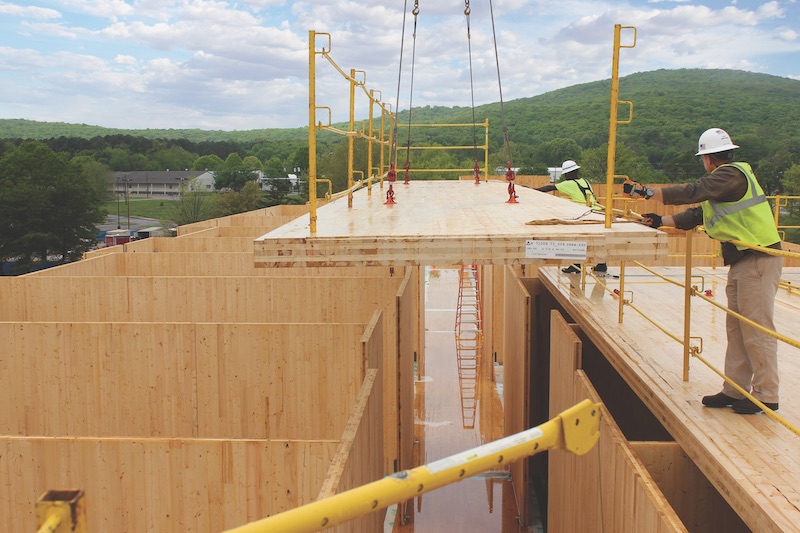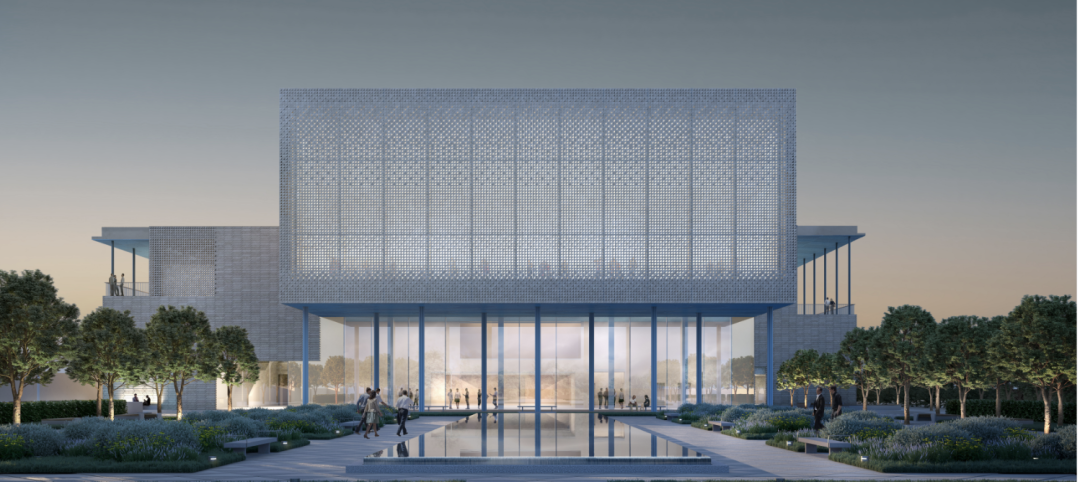The United States Army has enough on its plate without having to worry about operating as a hotel manager, too.
TOP 30 MILITARY ARCHITECTURE FIRMS
Rank, Firm, 2015 Revenue
1. HDR $24,971,124
2. Clark Nexsen $13,005,940
3. Guernsey $10,279,317
4. EwingCole $8,541,000
5. RS&H $8,100,000
6. Integrus Architecture $8,054,265
7. Leo A Daly $6,179,243
8. VOA Associates $4,600,000
9. Morris Architects $4,227,000
10. Emersion Design $4,095,748
TOP 40 MILITARY CONSTRUCTION FIRMS
Rank, Firm, 2015 Revenue
1. Fluor Corp. $823,562,993
2. Walsh Group, The $382,116,917
3. Hensel Phelps $340,673,000
4. Gilbane Building Co. $303,821,000
5. Lendlease $269,240,000
6. Whiting-Turner Contracting Co., The $180,266,105
7. Balfour Beatty US $167,548,244
8. Turner Construction Co. $137,117,144
9. McCarthy Holdings $121,411,531
10. Haskell $81,252,088
TOP 40 MILITARY ENGINEERING FIRMS
Rank, Firm, 2015 Revenue
1. Jacobs $67,384,666
2. AECOM $50,000,000
3. Burns & McDonnell $41,464,789
4. Benham Design $15,481,228
5. Sherlock, Smith & Adams $14,439,000
6. Thornton Tomasetti $10,840,435
7. Jensen Hughes $8,068,991
8. Dewberry $5,353,171
9. RMF Engineering $5,028,000
10. Woolpert $4,083,332
On the heels of a U.S. Government Accountability Office report that showed that more than 80% of Army lodging needed repairs or replacement—at an estimated price tag of $1.8 billion over 20 years—the Army kicked its Privatization of Army Lodging (PAL) program into high gear.
By privatizing the construction, renovation, operation, maintenance, and ownership of its hotels (it is the only military branch to do so), the Army expects to cut that 20-year timetable down to eight years.
Lendlease is a key partner in the PAL program, serving as the exclusive developer and owner of the hotels (the Army owns the land). InterContinental Hotels Group (IHG) is the PAL hotel operator under the Holiday Inn Express brand (for renovated Army hotels) and Candlewood Suites name (for newly constructed hotels).
The relationship between the Department of Defense, the Army, Lendlease, and IHG has produced lodging that has far exceeded anything created before PAL went into effect. For instance, the 310-room extended-stay hotel built on Joint Base San Antonio, completed in 2014, is the largest Candlewood Suites in the world.
The recently completed 92-room Candlewood Suites at Redstone Arsenal in Huntsville, Ala., is the first cross-laminated timber structure on a U.S. military installation and the first all-CLT hotel under any ownership type in the country.
Lendlease’s use of CLT, which is made of several layers of pressed lumber board stacked in alternating directions, is not a surprise. The company has committed $1 billion over the next five years to its Sydney, Australia-based startup, Design Make, which is dedicated to manufacturing prefabricated building components such as CLT.
Despite some early obstacles, such as meeting the highly restrictive military Anti-Terrorism and Force Protection requirements, the Building Team found that CLT construction was a great solution for the Redstone Arsenal project. Testing showed that the material performed well against the ATFP requirements due to its ability to carry load in varying directions.
“Labor scarcity, labor cost issues, schedule concerns, and foundation issues are all challenges that make CLT an attractive proposition,” says Lendlease’s Murray Woolcock, Executive General Manager, Strategic Business Units.
The Candlewood Suites on Redstone Arsenal totals 62,688 sf and can house 492 occupants. The structure used 1,200 CLT wall panels and 200,000 CLT fasteners. It is the first PAL structure to use prefabricated bathroom pods, which further helped to accelerate the construction schedule and reduce on-site waste.
By using prefabricated CLT, the Candlewood Suites was erected in just 10 working weeks by an 11-person crew, a 37% speed increase compared to conventional framing materials and methods for a similar-sized structure, according to Lendlease.
The Redstone Arsenal hotel represents a small portion of the PAL program, which encompasses 12,492 guestrooms across 41 Army installations. Because CLT lends itself to structures with a repetitive room types, such as hotels, there is a good chance the Redstone Arsenal project will not be the only building on an Army base to utilize the material.
“Lendlease is currently evaluating numerous sites in our PAL portfolio to implement the use of CLT,” says Woolcock. “We are confident that CLT will gain traction in many areas, and Lendlease is well positioned to grow our platform off the back of the successful delivery of Redstone Arsenal.”
House approves $81B military Construction bill
With a vote of 277 to 147, the House on May 19 passed the Military Construction and Veterans Affairs bill, which, if enacted, would provide $81.6 billion in discretionary funding for the sectors in 2017. The total is $1.8 billion more than the 2016 budget, but $1.2 billion short of what President Obama requested.
Contained within the bill is funding to house, train, and equip military personnel, provide housing and services to military families, and maintain infrastructure.
Nearly 10% of the total ($7.9 billion) would be used for large- and small-scale military construction projects at military bases in the U.S. and abroad. The allocation marks a $305 million decrease from fiscal year 2016, but is $250 million more than the President’s request.
Other allocations of note:
• $172 million for Overseas Contingency Operations and European Reassurance Initiative projects involving overseas bases
• $1.3 billion for the construction, operation, and maintenance of military family housing; while meeting the President’s budget request, it is $84 million off the budgeted amount in FY2015
• $304 million for the construction and alteration of military medical facilities
• $673 million for construction projects at National Guard and Reserve facilities across 21 states
• $900 million for VA construction projects
• $246 million for safety improvements and infrastructure work at DOD Education Activities facilities.
More on the bill at: http://bit.ly/28L8vwb.
RETURN TO THE GIANTS 300 LANDING PAGE
Related Stories
Multifamily Housing | Jul 28, 2022
GM working to make EV charging accessible to multifamily residents
General Motors, envisioning a future where electric vehicles will be commonplace, is working to boost charging infrastructure for those who live in multifamily residences.
Urban Planning | Jul 28, 2022
A former military base becomes a substation with public amenities
On the site of a former military base in the Hunters Point neighborhood of San Francisco, a new three-story substation will house critical electrical infrastructure to replace an existing substation across the street.
Hotel Facilities | Jul 28, 2022
As travel returns, U.S. hotel construction pipeline growth follows
According to the recently released United States Construction Pipeline Trend Report from Lodging Econometrics (LE), the total U.S. construction pipeline stands at 5,220 projects/621,268 rooms at the close of 2022’s second quarter, up 9% Year-Over-Year (YOY) by projects and 4% YOY by rooms.
Codes and Standards | Jul 27, 2022
Biden administration proposes drastic flood insurance reform
The Biden administration’s proposed major overhaul to the National Flood Insurance Program, or NFIP, would drastically alter how Americans protect homes and businesses against flooding.
Concrete | Jul 26, 2022
Consortium to set standards and create markets for low-carbon concrete
A consortium of construction firms, property developers, and building engineers have pledged to drive down the carbon emissions of concrete.
Green | Jul 26, 2022
Climate tech startup BlocPower looks to electrify, decarbonize the nation's buildings
The New York-based climate technology company electrifies and decarbonizes buildings—more than 1,200 of them so far.
Education Facilities | Jul 26, 2022
Malibu High School gets a new building that balances environment with education
In Malibu, Calif., a city known for beaches, surf, and sun, HMC Architects wanted to give Malibu High School a new building that harmonizes environment and education.
| Jul 26, 2022
Better design with a “brain break”
During the design process, there aren’t necessarily opportunities to implement “brain breaks,” brief moments to take a purposeful pause from the task at hand and refocus before returning to work.
Building Team | Jul 25, 2022
First Ismaili Center in the U.S. combines Islamic design with Texas influences
Construction has begun on the first Ismaili Center in the U.S. in Houston.
Codes and Standards | Jul 22, 2022
Office developers aim for zero carbon without offsets
As companies reassess their office needs in the wake of the pandemic, a new arms race to deliver net zero carbon space without the need for offsets is taking place in London, according to a recent Bloomberg report.

















